
views
Addressing the Scratch

Apply pressure to stop the bleeding. Some scratches may stop bleeding on their own. Others may bleed more heavily. To stop it from bleeding, place a clean tissue, cotton ball, cloth, or piece of gauze on it. Press down to apply pressure to stop the bleeding.

Wash your hands before touching the scratch. Though many scratches are not very deep, you should never touch them with dirty hands. Any open wound, even a thin scratch, can get infected if you transfer contaminants from your hand. Always wash your hands with soap and warm water before touching the scratch.
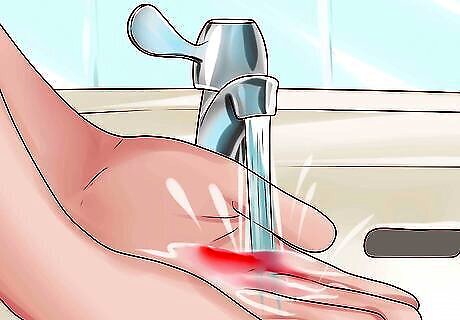
Clean the scratch. Place the scratch under running water. This helps clean any dirt, bacteria, or debris from the scratch. You can also clean around the scratch with mild soap. Avoid using hydrogen peroxide or iodine on a scratch. It can irritate the wound.

Determine if you need to see a doctor. Most scratches and scrapes can be treated at home without a doctor’s care. However, you may find that the scratch needs medical attention. If the bleeding doesn’t stop or it continues to soak through your bandage, you may need to see a doctor. If the scratch gets infected, you should see a doctor. Signs to look for include increased pain, swelling, and redness around the scratch and warmth around the area. Look for pus oozing from the scratch. Infections may also make you have a fever. If the wound is deep, punctured, or dirty, you may need a tetanus shot. If you have not had a tetanus booster in the last five years, visit your doctor to get one.
Taking Care of the Scratch
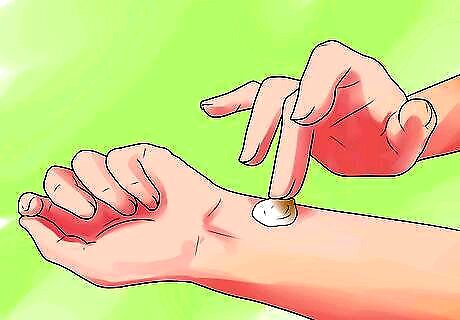
Apply ointment. After you have cleaned the wound and it has stopped bleeding, apply antibiotic ointment, such as Bacitracin or Neosporin, or petroleum jelly, such as Vaseline, on it. This helps keep the wound moist so it can heal more quickly. Apply a thin layer of ointment with clean fingers or with a cotton swab. Petroleum jelly can also reduce the chance of a scar. If the scratch itches, petroleum jelly can help soothe it.

Place a bandage on the wound. If the scratch is deep or moderate, you may want to put a bandage on it. This can help keep the scratch clean and protect it from bacteria. For minor scratches, leave the bandage off. You can use a Bandaid or gauze to cover the wound.

Clean the scratch every day. Once a day, remove the bandage to wash the scratch with soap and cool, running water. Put on a fresh bandage afterwards. You should also change it if it gets dirty or wet. Once the scratch heals enough that you don’t have to worry about bacteria, you can leave it uncovered. When the scratch has developed a new layer of skin over it or a scab, you can leave it uncovered because it isn't at risk for bacteria.
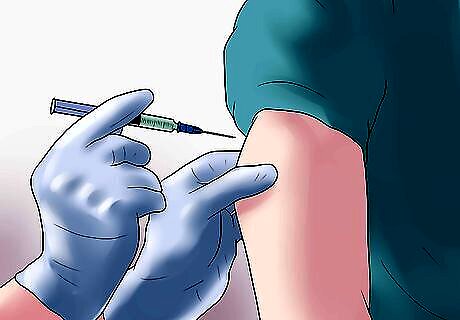
Decide if you need a tetanus shot. If you have been scratched by something rusty, like a nail, you may be at risk of developing tetanus. If you think you are at risk, go to the doctor. If you have had a tetanus shot, have the scratch assessed to make sure it is okay. If you haven’t had a tetanus shot in the last five years, talk to your doctor about getting one.
Healing Scratches Naturally
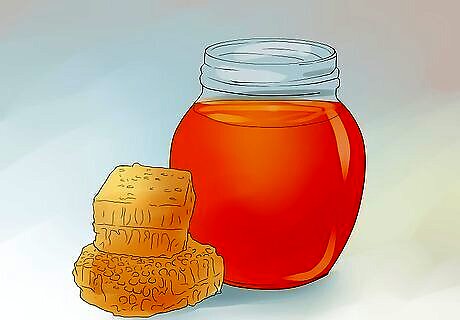
Use honey. Honey has antibacterial and antiseptic properties. It can help heal a scratch and keep it from getting infected. Use a clean finger, flat wooden spreader, or cotton swab to apply a thin layer of honey on the scratch. Honey also helps keep the scratch moist so it can heal the injured skin.
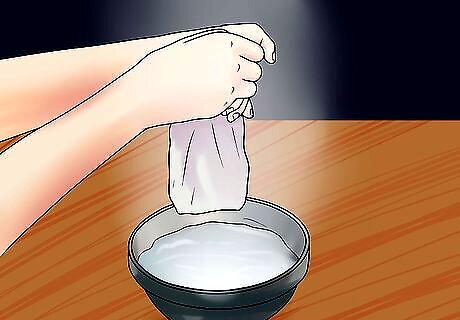
Try a chamomile compress. Chamomile has healing properties. It is antibiotic and antiseptic. Make a compress by soaking a clean cloth in tea and placing it on the scratch. You can also place chamomile tea bags directly onto the scratch.
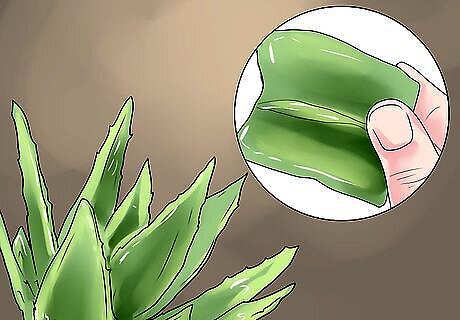
Use aloe vera. Aloe vera is used to treat burns, cuts, and scrapes because of its healing properties. You can try an ointment that contains aloe vera, but if you want to completely natural remedy, cut a piece of aloe off an aloe plant. Slide the inside of the aloe vera plant over your scratch.

Try an essential oil. You can try different essential oils to help heal your scratches. Just mix a few drops of the essential oil of your choice with a carrier oil, like olive or almond oil. Lavender has antibacterial and antiseptic properties and can help disinfect the wound. Eucalyptus oil has antimicrobial effects. Clove and rosemary oils also have antibacterial properties. You can also use chamomile essential oil.

Make a tea tree oil compress. Tea tree oil is an essential oil that is antimicrobial and has antibacterial properties. To use it for your scratch, place two drops of oil in a cup of warm water. Soak a cotton ball on the solution and wipe it over the scratch. Because it is so strong, it needs to be diluted with water when used on a scratch.


















Comments
0 comment